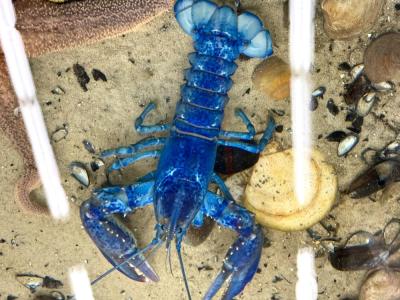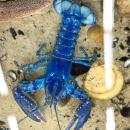No more feeling blue- lobster comes to live at UMass Dartmouth
Only about one in two million lobsters are born blue and only 10 to 20 blue lobsters are found a year, including one recently acquired by the University of Massachusetts Dartmouth School for Marine Science and Technology.
Lobsters can have an excess of a protein that causes some blue spots, but almost all lobsters have some red, according to UMass Dartmouth sea-water lab manager Forrest Kennedy. The all blue mutation is caused by the blue protein binding to the red protein.
The lobster was caught by a fisherman on the “Michael and Erin” in Beverly in early to mid June, who called the Massachusetts Division of Marine Fisheries with the condition that the lobster not be eaten. As UMass Dartmouth shares a building with Marine Fisheries, the university is now housing the lobster.
“We can offer him a good home here,” Kennedy.
The lobster is male based on his large claw size and fins. He is estimated to be about seven to nine years old, and weighs 1.25 pounds. Lobsters are estimated to live up to 100 years, so UMass could have him for a long time.
The lobster is now in SMAST-East seawater touch tank for education, as UMass Dartmouth has kids and school tours to learn about marine life and lobster anatomy.
So far he has been getting along with his tank mates of starfish, clams and small fish, Kennedy said.
Some of the other wildlife they currently have are local skates, sharks, snails and scallops.
The lobster does not currently have a name, but Chancellor Mark Fuller is considering having a naming ceremony for him.
“Everybody loves blue lobsters,” said Kennedy.











































